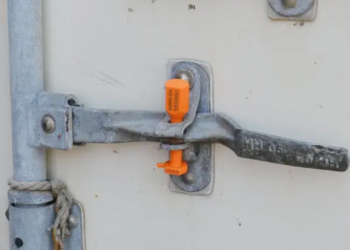ISO 17712 is an international standard that specifies the requirements for mechanical seals used in containerized cargo transportation to help prevent tampering, theft, and unauthorized access to cargo. These seals are commonly referred to as “high security seals” or “bolt seals.” The standard outlines various testing procedures and guidelines to ensure the effectiveness and reliability of these seals. Below are some key aspects of ISO 17712 testing for seals used in intermodal transportation.
1. Physical Strength and Durability:
ISO 17712 requires seals to undergo tests to assess their physical strength and durability. This includes evaluating the seal’s resistance to bending, tension, and impact forces that it may encounter during transportation and handling. The seals are subjected to different stress levels to ensure they can withstand the rigors of intermodal transportation without breaking or becoming compromised.
2. Tamper Evidence:
One of the primary objectives of ISO 17712 testing is to ensure that the seals provide clear evidence of tampering attempts. Seals are subjected to tests that simulate various tampering methods, such as cutting, pulling, or drilling. The seals should exhibit visible and irreversible signs of tampering, ensuring that any attempt to breach the seal is easily detectable.
3. Environmental Resistance:0
Seals used in intermodal transportation must be able to withstand a range of environmental conditions, including exposure to extreme temperatures, moisture, chemicals, and UV radiation. ISO 17712 testing involves subjecting the seals to environmental chambers that simulate these conditions to verify their resilience over time.
4. Compatibility with Container and Trucking Equipment:
The standard requires seals to be compatible with common container and trucking equipment. This includes ensuring that the seals can be easily applied to and removed from containers, trucks, and trailers without causing damage. Compatibility testing ensures that the seals can be efficiently integrated into existing transportation processes.
5. Material Composition and Strength:
ISO 17712 outlines specific requirements for the materials used in seal construction. The materials should be chosen for their strength, durability, and resistance to tampering. The standard specifies the minimum breaking strength of the seals, ensuring that they cannot be easily compromised.
6. Certification and Compliance:
Seal manufacturers must obtain certification from accredited testing laboratories to confirm that their seals meet the ISO 17712 standards. This certification provides assurance to customers and regulatory bodies that the seals have undergone rigorous testing and meet the required criteria.
7. Documentation and Labeling:
The standard also mandates that seals be properly labeled with relevant information, such as the manufacturer’s name, seal number, and barcode. This labeling facilitates tracking and identification of the seals throughout the transportation process.
Summary:
ISO 17712 testing guidelines for seals used in intermodal transportation are designed to ensure the security and integrity of cargo during transit. The standard covers various aspects such as physical strength, tamper evidence, environmental resistance, compatibility, material composition, and certification. By adhering to these guidelines, seal manufacturers and users can enhance the security of their cargo and mitigate the risk of tampering and theft.











